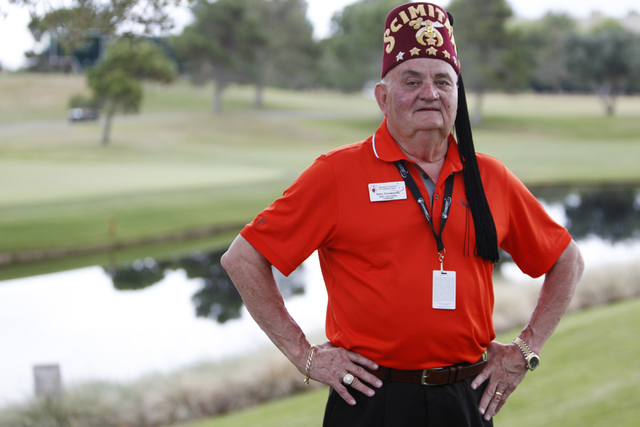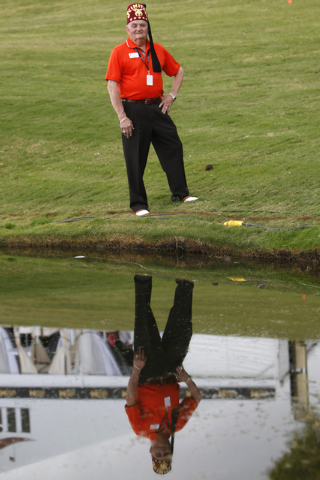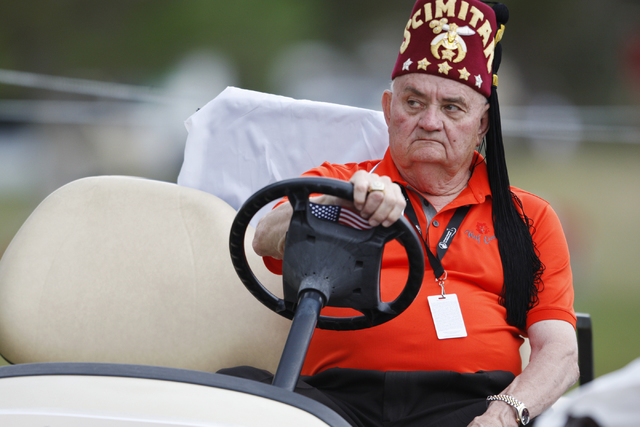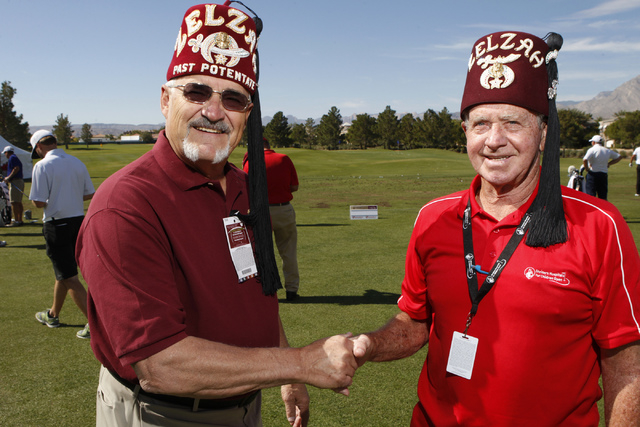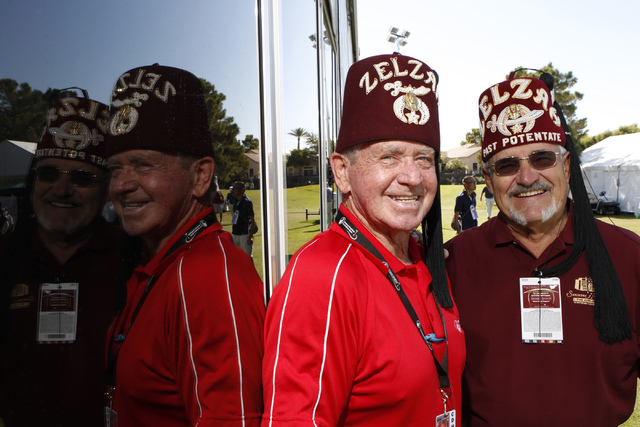Shriners want fez worn far and wide
There used to be a time when everybody was familiar with Shriners and their bling-bling, red fez hats with rhinestones and black tassels, whether they were motoring around in their mini cars during a parade, or lathered in clown makeup for their annual circus.
Nowadays, Fred Flintstone and the Grand Poobah of the Loyal Order of Water Buffaloes at Lodge No. 26 might be more popular than Shriners International.
“We’ve gone from almost a million nobles to less than 300,000,” said Gary Dunwoody, a member of the Shriners board of trustees and chairman of the Shriners Hospitals for Children Open, which concludes today at TPC Summerlin. “It’s affected all fraternities, and it’s true, we just don’t have as big a presence as we once did and have no presence in some of the smaller towns.”
Membership numbers have plummeted since the 1970s for various reasons, according to Dunwoody.
“How much easier is to roll over (in the morning) and look at your laptop than to get up and get dressed and go to a function?” he asked. “We’ve got to be as concentrated on membership as we are on our hospitals. Because without Shriners, there wouldn’t be Shriners Hospitals.”
Nevertheless, the No. 1 goal of the Shriners organization — the hospitals that provide innovative pediatric specialty care, world-class research and outstanding medical education — continues to thrive via 23 facilities in North America thanks to the diligence of those still donning their fuzzy red hats, not to mention the Shriners Open, which has become a Las Vegas tradition and is the organization’s top fundraiser annually.
Dunwoody, who joined the Masons in 1972 and became a Shriner in 1972, said there is far too much competition for quality time, so things such as pancake breakfasts and men’s socials have lost the allure they once had, which is disheartening for him because he has seen the quality of care by the hospitals improve in 40 years in terms of medical facilities and research, not to mention the doctors providing care.
“We’ve actually got a better product now than we had then, but we don’t have the numbers to support it, and that’s frustrating,” Dunwoody said with his witty southern drawl while puffing on a cigar. “Think about it, if you’re in sales and you got a product and you believe in your product, you think you’d be able to sell your product. But a lot of people don’t really know what we do or what we are because we don’t have that presence in the big cities anymore. We just don’t have the awareness.
“There’s so much competition now for people’s time. A lot of cases the husband works, and Shrine and the Masonry as a whole is just not a priority like it used to be.”
According to John Pennington, a charter member and past potentate (2003) of Las Vegas’ Zelzah Shrine Temple, the local chapter once needed 2,500 signatures of potential members to become a charter in town. The numbers dipped no lower than 2,000 members in the 1990s and into the early 2000s, but currently is somewhere around 800 members.
“It’s been going down because probably we haven’t been out there doing publicity,” said Pennington, who remembers when there were a handful of Shriners Hospitals when he became a Shriner in 1970. “Since we’ve started with the golf tournament here, the membership has started coming back up. People see us and know a little bit more about us. It’s really gotten the word out, and what our purpose is for, and they can see what we do for the children.”
Because of TV exposure and the growing population of the event, Pennington said volunteers have come out of nowhere to be a part of the event. He’s hoping that will carry over to the organization and quite possibly intrigue men to become Shriners.
“Once they come out here to the tournament, a lot of them do inquire about being a Shriner,” he said.
The first step to becoming a Shriner is to join the Masons. Originally, when Pennington became a Shriner, you not only needed to become a Mason but also had to earn your 32nd Degree Mason, which meant you were a Master Mason, having earned your Scottish or York Rite, branches of freemasonry.
But even with lesser requirements to become a Shriner these days, Pennington said this is an era that is simply different, and he reiterated Dunwoody’s sentiment there simply is no time for men to become a Shriner.
“When I became a Shriner, I worked and my wife stayed home,” Pennington said. “This day in time, in most families both the mother and father work, and it takes more time to raise their families, and they have their kids involved in many things — Pop Warner, baseball, going to the gym and things like that — and they just don’t have time to get involved.
“That’s the reason, when you see the most of us, you think we’re old. If we could get a younger group of men to join, that’d probably bring our membership back up.”
Dunwoody said the average age of a Shriner “has grown to about 65 years old,” and no matter how competitive the organization gets to recruit more members, it has been a struggle to build membership to what it once was.
“People still find time to do what they want to do if it’s a priority,” Dunwoody said. “Our deal is we are not a priority anymore like we were at one time, and that’s our fault. We’ve just got a branding problem. In my opinion, it’s getting exposure of that fez, and that’s why I kind of insisted everybody wear their fez (during the Shriners Open) — that’s our trademark.
“We got to get the message out. We’ve got a very unique product, gimme a break, we got the finest product in the world.”



